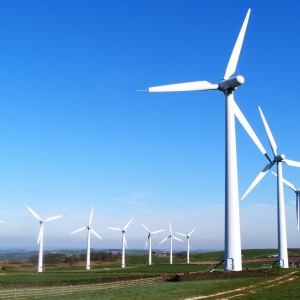A promising design in wind turbines has recently been developed by Iowa State Aerospace engineers Hui Hu and Anupam Sharma.
After exploring the idea of adding a smaller secondary rotor to an existing wind turbine, a more efficient energy output can be harnessed from the wind.
The twin rotor blade technology is a radical design from the usual wind towers seen today. This particular innovation, however, has garnered hundreds of patent claims.
Traditional wind turbine technology makes use of either three or two blade rotors that generate electricity from the wind’s kinetic power.
There are at least two kinds of wind towers, and these are the vertical and the horizontal axis types.
Typically used in many offshore locations where wind energy is known to be more predictable and productive, its technology has continually been a subject to many improvements over the years.
The recent development done by Mr Sharma and Mr Hu emanates from their findings on two of the major problems surrounding the conventional wind towers.
Traditional wind turbines
For one, these large structural pieces simply cannot harvest wind energy efficiently because it is not made in the shape of an airfoil.
Another important finding by the engineers on traditional wind turbine technology is the constant disruption of the wind caused by large base of the blades.
This particular interference inadvertently reduces the tower’s capacity to harvest energy.
According to Mr Hu, “Turbines in the slipstream of another will definitely lose some eight to at most 40 per cent of energy production depending on the conditions.”
To prevent such loss, both engineers found a way to optimize the wind energy harvested from every turn of the wind tower blades.
The new design
Mr Sharma and Mr Hu discovered that adding a second smaller rotor would help generate more wind energy.
“To solve the issues of single-rotor tri-blade turbines, we were able to come up with a second smaller rotor that will help increase the efficiency of gathering kinetic energy from the wind. Two rotors at the same wind tower eventually delivers more energy,” said Mr Hu.
To demonstrate the veracity of the extra blades efficiency, both engineers made a series of laboratory tests and computer-aided simulations.
The data from said observations were able to deliver a staggering 18 per cent increase in efficiency.
“These are fairly established technologies we are referring to, hence, an increase in the range of 10 to 20 per cent means a huge change,” added Mr Sharma.
The engineering duo is currently using a one-year $116k grant from the Iowa Energy Centre.
The observations and testing of the dual rotor technology is still being done via wind tunnels and computer simulations with each power outputs and wind loads measurement recorded.
It is the engineers goal to answer some of the challenging mysteries surrounding the technology such as wake distribution, structure of the whirling vertices, and on how to manipulate the wake in pulling down air and recharging wind load.
The study’s result will then be used as a steppingstone to find the best aerodynamic design for dual-rotor wind turbines.
The ultimate goal is to specifically generate the best technology where it can positively pinpoint the best location and size for the second rotor, the type of airfoil to use, and the type of rotation it should employ.
Photo courtesy of steve p2008

